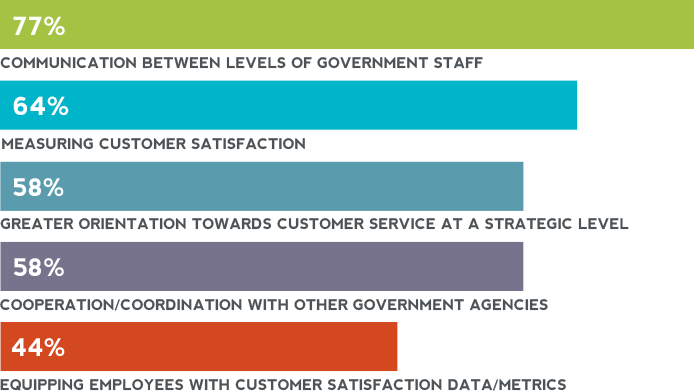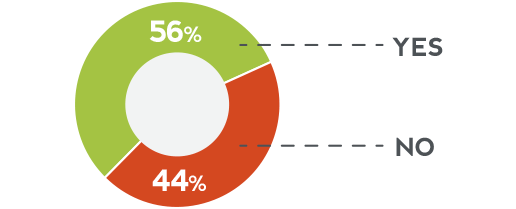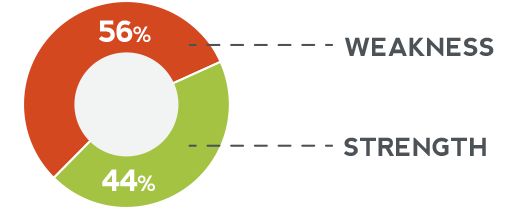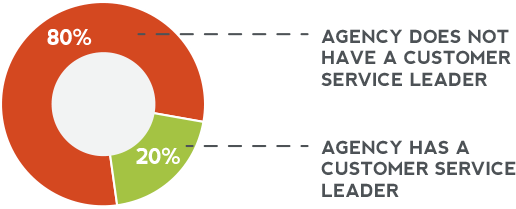More than 70 percent of federal employees say customer service is an organizational value. Yet only 20 percent say they have a single leader responsible for it.
Eagle Hill Consulting recently undertook a survey of federal employees to gain a straightforward perspective on the challenges and opportunities for improving government customer service—from those operating right at its core. With OMB Circular A-11’s customer experience (CX) maturity model as our framework, Eagle Hill is providing a series of recommendations, based on our discoveries, for agencies to apply right away.This article focuses on both governance (establishing structured oversight) and key leadership practices (especially agency-wide communication about service). Together, they form indispensable supporting frameworks of thriving customer service efforts. Our survey shows that while federal agencies have made inroads to CX improvement, significant and immediate opportunities for enhancing customer service remain. Most notably, 80 percent of Eagle Hill survey respondents state there is no one leader in charge of the customer experience at their agencies.
Who sets the customer service tone? Who communicates priorities and initiates action at all levels of the organization? Who provides guidance and encouragement on employees’ customer service performance? A leader, of course.
OMB CIRCULAR A-11 SECTION 280: WHAT IT MEANS FOR GOVERNMENT CUSTOMER SERVICE
OMB Circular A-11 Section 280 gives guidance for agencies to enhance the customer experience (CX). By focusing on improvements in five core functions of the CX maturity model—measurement, governance and strategy, culture and organization, customer understanding, and service design—it’s intended to make CX across government more consistent, comprehensive, and robust.
Source: OMB Circular A-11 Section 280
Get the message out about customer service—again and again
Effective communication from effective leadership leads to effective customer service. People need to feel connected to the work they do. That connection has its basis in understanding. An agency’s customer service leader will clearly communicate the CX path for employees and keep momentum going in the right direction through regular conversations and two-way internal feedback.
Eagle Hill’s survey results underscore the criticality of communication. Indeed, 77 percent of respondents say communication between levels of government is a critical element in customer service strategy. Despite this fact, and despite the prominence of customer service in the President’s Management Agenda, only a little over half (56 percent) of our survey respondents say their leadership frequently includes the importance of customer service in their conversations with employees (Figure 1).
FIGURE 1: WHILE 3 OUT OF 4 FEDERAL EMPLOYEES SAY COMMUNICATION IS A CRITICAL ELEMENT OF A CUSTOMER SERVICE STRATEGY, ONLY ABOUT 1 IN 2 SAY THEIR LEADERSHIP FREQUENTLY DISCUSSES CUSTOMER SERVICE WITH THEM
Q: Which of the following do you see as critical elements of an effective customer service strategy? (Respondents selected all that apply)

Employees say communication between levels of government is a critical element of a customer service strategy. Yet, just over half of federal employees say that their agency leadership frequently discusses the importance of customer service.
Q: Does your agency have leadership that frequently discusses the importance of customer service?

Source: The 2018 Eagle Hill Consulting Federal Government Customer Service Survey
Additionally, more than half of survey respondents (56 percent) identify maintaining channels of communication between management and supervisees as a weakness in their agency’s customer service function (Figure 2).
FIGURE 2: FEDERAL EMPLOYEES IDENTIFY INTERNAL COMMUNICATION AS A CX WEAKNESS
Q: Within your organization’s customer service functions, do you feel that maintaining channels of communication between management and supervisees is a strength or a weakness?*

*Respondents were asked the question ‘Within your organization’s customer service functions, do you feel that each of the following is a strength or a weakness?’ and presented with several options; ‘Maintaining channels of communication between management and supervisees’ was one of these options.
Source: The 2018 Eagle Hill Consulting Federal Government Customer Service Survey
Perhaps not surprisingly then, despite the high number (70 percent) of employees who say customer service is a core organizational value, only a little more than half of survey respondents (58 percent) identify customer service as an actual mission priority within their agencies.
Who’s in charge? For customer service improvements, agencies have to be able to answer the question.
Our findings make a compelling case for a more cohesive, centralized approach to managing the customer experience within agencies—and specifically, the value of an agency-wide Chief Customer Experience Officer (CCXO) or similar. While OMB Circular A-11 stresses identifying executives and leaders responsible for aligning the CX strategy and activities within the agency’s broader mission and strategic priorities as one of the major elements of its CX maturity model, 80 percent of federal employees say their agency still does not have a single leader responsible for customer service (Figure 3).
FIGURE 3: THE VAST MAJORITY OF FEDERAL EMPLOYEES REPORT NO ONE PERSON IS LEADING THEIR AGENCY’S CUSTOMER SERVICE CHARGE
Q: Does your organization have a single leader that is responsible for customer service?

Source: The 2018 Eagle Hill Consulting Federal Government Customer Service Survey
For federal agencies, getting serious about customer service means acknowledging that the complexity of government requires a committed top-level executive who will give the subject the focused attention it demands. As the private sector continues its investments in new service enhancements, federal agencies looking to close the potentially growing gap between citizen service expectations and experiences will need to forgo half measures.Eagle Hill proposes that every agency concerned about customer service should employ a CCXO (or similar) to captain the government customer service ship, ensuring customer experiences are relevant, reliable and seamless, irrespective of the chosen channel of interaction. The CCXO’s role will be to understand and prioritize citizen preferences, champion relevant initiatives and communicate progress.
Moreover, with access to top-level information, an effective CCXO can consolidate disparate pieces of information on customers for data-centric approaches to service. For example, a recent Federal News Network article by Anahita Reilly, Chief Customer Experience Officer at GSA, describes how establishing a centralized, consistent and rigorous data flow for all customer feedback, and pairing this data with operational data enhanced decision making, drove millions in savings and contributed to a positive organizational culture shift (“Why Customer Experience is Important to GSA, Government,” October 1, 2018).
Eagle Hill survey results support the value of such an empowered leader. Although still a rarity in government, Eagle Hill found that when their agencies do have a single customer service lead, employees are much more likely to score their agencies higher on critical customer service elements—in some cases, approximately 25-30 percent higher than employees in agencies without a single lead.
For example, federal employees in agencies with a single CX lead say their agencies more effectively measure customer satisfaction; more often provide customer satisfaction metrics to employees; and more effectively measure customer service effectiveness (Figure 4).
FIGURE 4: EAGLE HILL SURVEY DATA MAKES THE CASE FOR A SINGLE CUSTOMER SERVICE LEAD
Employees in agencies with a single customer service lead are more likely to score their agencies higher on critical customer service elements than employees in agencies without a signle customer service lead.*
+33%
PROVIDE CUSTOMER SATISFACTION METRICS TO EMPLOYEES*
+29%
EFFECTIVELY MEASURE CUSTOMER SATISFACTION**
+28%
MEASURE CUSTOMER SERVICE EFFECTIVENESS*
*Percentages shown represent the difference in the share of respondents selecting ‘Yes’ to the questions “Does your agency provide its employees with customer satisfaction scores/metrics?” and “Does your agency measure customer service effectiveness?”
**Percentages shown represent the increase in positive (”effective”) responses to the question “How well has each of the following been implemented at your organization?” when agencies have a single customer service lead.
Source: The 2018 Eagle Hill Consulting Federal Government Customer Service Survey
The strong correlation between having a defined CX leader and positive customer service results gives impetus to formalizing the role more broadly across the federal government. As agencies learn from the positive CCXO experiences at their peer organizations, we expect the trend toward installing this leadership position to gain rapid traction.
Methodology
The 2018 Eagle Hill Consulting Federal Government Customer Service Survey was conducted online by Government Business Council between June and July 2018. The online survey included 625 respondents from a random sample of respondents across the Federal Government (including civilian and Department of Defense agencies).
Go here to follow the series.

